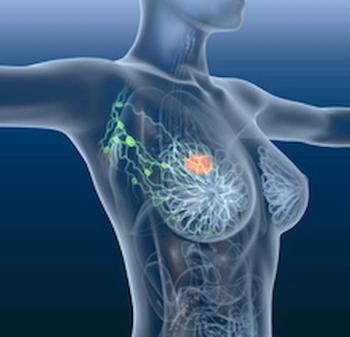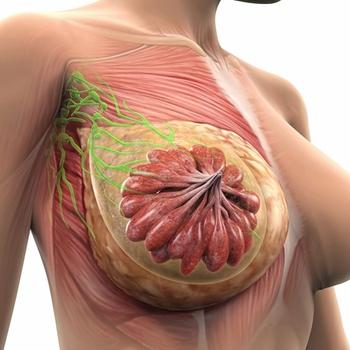
FDA OKs Adjuvant Pembrolizumab for Resected NSCLC

The FDA approved adjuvant pembrolizumab for the treatment of patients with resected non–small cell lung cancer, based on data from the phase 3 KEYNOTE-091/EORTC-1416-LCG/ETOP-8-15-PEARLS trial.
The FDA has granted approval to adjuvant pembrolizumab (Keytruda) for the treatment of completely resected non-small cell lung cancer (NSCLC), according to a press release fromthe agency.1
"The good news is this approval gives physicans another option to offer their patients to keep the cancer from coming back once the patients have the maximum surgery, the maximum chemotherapy, and immunotherapy," Roy Herbst, MD, PhD, Ensign professor of medicine and professor of pharmacology at Yale School of Medicine and chief of Medical Oncology at Yale Cancer Center and Smilow Cancer Hospital in New Haven, Connecticut, said in an interview with CancerNetwork® about the approval. "The data are quite exciting."
The approval was based on data from the phase 3 KEYNOTE-091/EORTC-1416-LCG/ETOP-8-15-PEARLS trial (NCT02504372), which compared the efficacy of pembrolizumab with placebo among 1117 patients with resected NSCLC. Of these patients, 86% received adjuvant therapy following resection.
The median disease-free survival (DFS) was 58.7 months in the pembrolizumab arm (95% CI, 39.2-not reached [NR]) and 34.9 months in the placebo arm (95% CI, 28.6-NR; HR, 0.73; 95% CI, 0.60, 0.89)
The agency recommended a dose of 200 mg every 3 weeks or 400 mg every 6 weeks until disease recurrence, toxicity, or if patients remain on treatment for up to 12 months.
The median DFS for patients with a PD-L1 tumor proportion of 50% or more was NR in either the pembrolizumab cohort (95% CI, 44.3-NR) or the placebo group (95% CI, 35.8-NR; HR, 0.82; 95% CI, 0.57-1.18; P = .014). In an exploratory analysis of 167 patients who did not receive adjuvant chemotherapy, the HR for DFS was 1.25 (95% CI, 0.76-2.05).
Investigators of the KEYNOTE-091 trial observed favorable DFS outcomes in the pembrolizumab cohort across various baseline patient characteristics. These factors included receipt of bilobectomy (HR, 0.85; 95% CI, 0.43-1.69), lobectomy (HR, 0.78; 95% CI, 0.64-0.96), and pneumonectomy (HR, 0.71; 95% CI, 0.40-1.24); a lymph node involvement of pN0 (HR, 0.63; 95% CI, 0.46-0.86) or pN1 (HR, 0.77; 95% CI, 0.57-1.03); and a tumor size of 4 cm or less (HR, 0.91; 95% CI, 0.69-1.20) or larger than 4 cm (HR, 0.70; 95% CI, 0.55-0.89).
Based on the type, extent, and use of adjuvant chemotherapy, DFS outcomes favored the pembrolizumab arm for those who received 1 to 2 cycles of treatment (HR, 0.59; 95% CI, 0.28-1.26), and for those who received 3 to 4 cycles (HR, 0.74; 95% CI, 0.61-0.91).
In the KEYNOTE-091 trial, adverse effects that occurred included hypothyroidism (22%), hyperthyroidism (11%), and pneumonitis (7%). Additionally, there were 2 fatal reactions of myocarditis.
In a read out that published in the Journal of Clinical Oncology in June 2022,2 in terms of DFS outcomes, the HR was 0.73 for those who received adjuvant chemotherapy (n = 1010) and 1.25 (95% CI, 0.76-2.05) for those who did not (n = 167). Additionally, the HR for DFS by number of cycles was 0.51 (95% CI, 0.31-0.83) for carboplatin and vinorelbine, 0.65 (95% CI, 0.30-1.40) for cisplatin plus gemcitabine, 0.74 (95% CI, 0.55-0.98) for cisplatin plus vinorelbine, and 0.68 (95% CI, 0.41-1.14) for other combinations.
"Before the approval, [pembrolizumab was] a drug that we very commonly use in first-line metastatic or advanced disease, with chemotherapy, [and] in the second-line setting. And now we are using it here in the earliest disease setting. That’s always been the goal: to take the best drugs and move them earlier in disease, this way more patients will live longer having been treated for lung cancer," Herbst concluded.
References
- FDA approves pembrolizumab as adjuvant treatment for non–small cell lung cancer. News release. FDA. January 26, 2022. Accessed January 26, 2022. https://bit.ly/3JeArIR
- O’Brien M, Paz-Ares L, Jha N, et al. EORTC-1416-LCG/ETOP 8-15 – PEARLS/KEYNOTE-091 study of pembrolizumab versus placebo for completely resected early-stage non-small cell lung cancer (NSCLC): outcomes in subgroups related to surgery, disease burden, and adjuvant chemotherapy use. J Clin Oncol. 2022;40(suppl 16):8512-8512. doi:10.1200/JCO.2022.40.16_suppl.8512
Newsletter
Stay up to date on recent advances in the multidisciplinary approach to cancer.

















































































